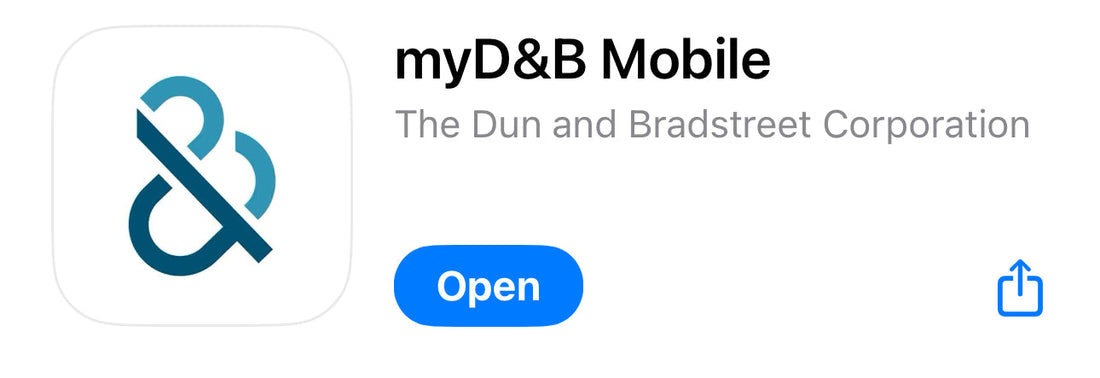
A Quick Guide to Understanding Business Credit Reports
When evaluating a company’s financial health, creditworthiness, and overall risk profile, business credit reports are indispensable. These reports are widely used by lenders, suppliers, investors, and potential business partners to assess a company’s financial stability and payment behavior. Unlike personal credit reports, which are regulated under the Fair Credit Reporting Act (FCRA) and follow standardized scoring models, business credit reports vary by credit bureau and include multiple risk assessment metrics.
Among the top business credit bureaus, Dun & Bradstreet (D&B) is one of the most well-known and widely used providers of commercial credit reports. Their reports provide deep insights into a company’s financial reliability, payment history, and credit risks. This information is essential for businesses that want to secure funding, negotiate favorable trade terms, and establish trust with stakeholders.
In this guide, we will explore the key aspects of a Dun & Bradstreet business credit report, explain how it differs from consumer credit, and highlight why understanding these reports is critical for business success.
What is a Business Credit Report?
A business credit report is a detailed document that provides an overview of a company’s creditworthiness. It compiles data from various sources, including trade payment experiences, financial statements, public records, and industry benchmarks, to present a full picture of a business’s financial behavior. These reports are commonly used by lenders, vendors, and potential business partners to determine whether a company is financially stable and responsible in meeting its obligations.
How Business Credit Reports Differ from Consumer Credit Reports
There are several key differences between business and consumer credit reports:
1. No Standardized Score – Unlike personal credit, which typically uses FICO or VantageScore models, business credit reports have multiple scoring systems that vary by credit bureau.
2. Public Accessibility – Personal credit reports are private and require authorization to access, whereas business credit reports are publicly available for purchase.
3. Multiple Score Types – Business credit reports include predictive scores (future risk) and performance-based scores (historical reliability), offering a more comprehensive view of financial stability.
4. Company-Level Reporting – Business credit reports evaluate an entire company, while consumer credit reports focus on an individual’s financial habits.
Key Components of a Dun & Bradstreet Business Credit Report
Dun & Bradstreet’s business credit reports go beyond a simple credit score. They provide a comprehensive financial profile of a company, helping businesses assess risk before extending credit or entering into partnerships. Here are the core sections of a Dun & Bradstreet business credit report:
1. D-U-N-S® Number
The D-U-N-S Number is a unique nine-digit identifier assigned to businesses by Dun & Bradstreet. It serves as a global standard for identifying and tracking businesses. Many lenders and government agencies require companies to have a D-U-N-S Number to apply for loans or contracts.
2. Business Information & Ownership Structure
This section provides a company’s legal name, address, phone number, industry classification codes (SIC/NAICS), and ownership details. It also includes information on parent companies, subsidiaries, and affiliated businesses, which can help evaluate corporate relationships and financial stability.
3. Payment History & Trade References
Dun & Bradstreet collects data from vendors and suppliers that have extended credit to a business. This section details:
• Payment history (on-time vs. late payments)
• Average days beyond terms (DBT) – indicating how often a business pays its invoices late
• Credit limits assigned by suppliers
A strong trade payment history can improve a business’s credibility and help secure better financing and vendor terms.
4. PAYDEX® Score
The PAYDEX Score is Dun & Bradstreet’s proprietary credit rating system, ranging from 1 to 100. It measures a company’s payment behavior:
• 80 – 100: Low risk (on-time payments or early payments)
• 50 – 79: Moderate risk (occasional late payments)
• 1 – 49: High risk (frequent late payments, potential delinquency)
A higher PAYDEX score indicates that a company pays its bills on time and is financially reliable.
5. Financial Stress Score
This score predicts the likelihood of a business experiencing financial distress or failure within the next 12 months. It helps lenders and suppliers assess default risk before extending credit.
6. Commercial Credit Score
The commercial credit score is a predictive risk assessment that estimates a company’s probability of severe delinquency or bankruptcy. It is often used by lenders to evaluate loan risk.
7. Legal Filings & Public Records
Dun & Bradstreet’s reports include public records such as:
• Bankruptcies
• Liens & judgments
• UCC filings (Uniform Commercial Code liens)
• Tax liens
This section provides insight into any legal risks that could affect a company’s financial standing.
8. Business Industry & Market Risk Indicators
Some Dun & Bradstreet reports include industry benchmarks and market trends to help businesses compare their financial performance against competitors. This section evaluates factors like:
• Industry-specific credit risk
• Macroeconomic trends
• Competitive positioning
How Business Credit Reports Affect Your Company
Maintaining a strong business credit profile is essential for long-term financial success. Here’s how your business credit report can impact your company:
1. Access to Financing – A strong business credit score can help secure better loan terms and higher credit limits.
2. Supplier & Vendor Relationships – Vendors may offer better payment terms (such as Net 30 or Net 60) if a business has a solid credit history.
3. Business Growth Opportunities – Government contracts and large corporate partnerships often require a D-U-N-S Number and credit history review.
4. Insurance & Leasing Costs – Some insurance companies and landlords check business credit reports before offering commercial policies or leasing agreements.
5. Partnerships & Investor Confidence – Investors and potential business partners review credit reports to assess financial stability and risk.
How to Improve Your Business Credit Score
If your business credit report contains negative items or a low score, there are several steps you can take to improve it:
1. Establish Business Credit
• Register for a D-U-N-S Number with Dun & Bradstreet.
• Open a business bank account and apply for business credit cards.
2. Pay Bills on Time
• Make timely payments to vendors, suppliers, and lenders.
• Consider setting up automatic payments to avoid late fees.
3. Use Trade Credit to Build History
• Work with suppliers who report payment activity to credit bureaus.
• Apply for Net 30 or Net 60 vendor accounts.
4. Monitor Your Business Credit Report
• Regularly check your Dun & Bradstreet, Experian, and Equifax business credit reports for inaccuracies.
• Dispute any errors or outdated information.
5. Reduce Debt & Credit Utilization
• Keep credit card and loan balances low relative to your limits.
• Pay off existing debts to improve financial health.
Final Thoughts
A Dun & Bradstreet business credit report is a powerful tool for assessing financial stability, managing risk, and unlocking growth opportunities. Whether you’re a small business owner looking to build credit or a corporation evaluating potential partnerships, understanding how to read and interpret these reports can provide a competitive advantage.
By actively managing your business credit profile, you can secure better financing, strengthen vendor relationships, and position your company for long-term success. Regularly reviewing your business credit report and taking steps to improve it can open doors to new opportunities and greater financial flexibility.
